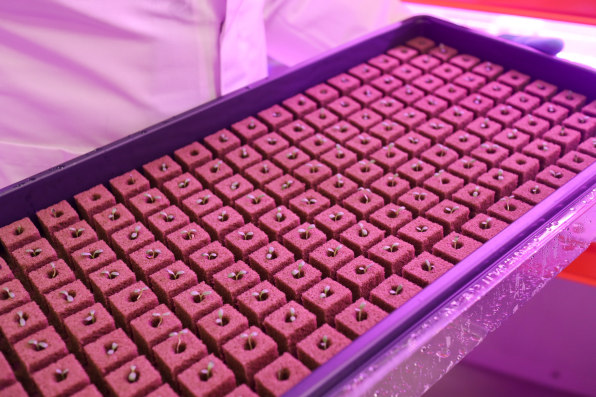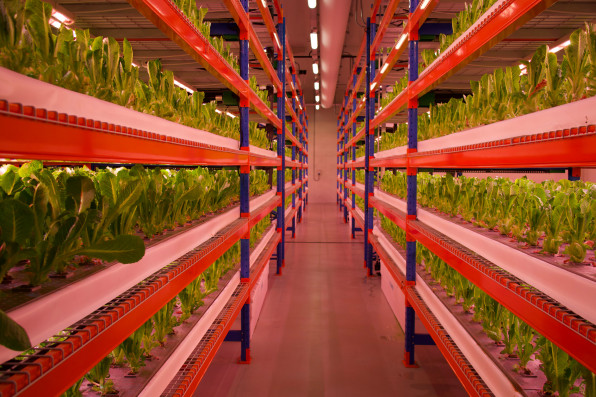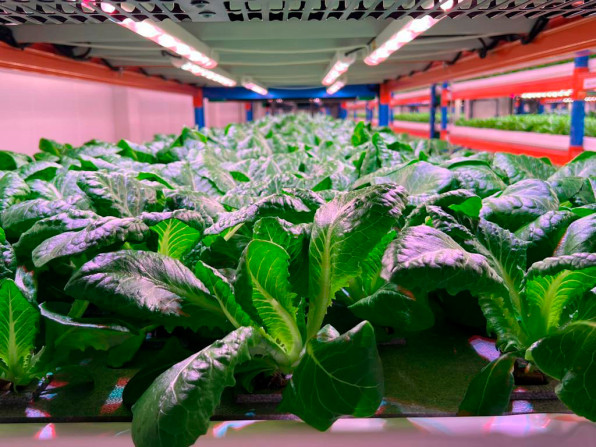- | 8:00 am
Dubai is now home to the largest vertical farm in the world
The building will produce 2 million pounds of greens per year, in a country that currently imports nearly all of its food.

If you walk into a grocery store in Dubai, the spinach on the shelves will probably be from Europe—or even from as far away as the United States. Because of limited arable land and water, the United Arab Emirates imports about 90% of its food. But inside a warehouse-like building near the Dubai airport, a new vertical farm is now beginning to grow more than 2 million pounds of local leafy greens per year.

The farm, called ECO 1, is now the largest vertical farm in the world, with the more than 330,000-square-foot facility stacked with shelves growing lettuce, spinach, arugula, and mixed greens. “Size does matter in the food production space,” says Craig Ratajczyk, CEO of Crop One, a vertical farming company based near Boston that partnered with Emirates Flight Catering, the company that supplies Emirates Airlines with food, to build the farm. Like other indoor farms, the new facility automatically tracks and adjusts lighting, humidity, nutrients, and other factors to boost plant growth. But scaling up production helps spread out the cost of that tech. “When you’re talking about something this large, the economics work out well,” says Ratajczyk. “So it turns out to be a very profitable farm.”

The facility also uses 95% less water than is required to grow greens in a field, and no pesticides or herbicides; because it’s grown in a controlled environment and immediately sent to stores or the airline, Ratajczyk says the greens don’t have to be washed before they’re eaten. Unsurprisingly, there is less spoilage than with produce that has traveled thousands of miles. Still, though it saves on fuel, it’s not clear how the total carbon footprint compares to imported food. The company declined to share details about how much energy the farm will use (lighting is one factor in the emissions from vertical farms, and air conditioning is another (especially in so hot a location), though the company says that it uses systems that are as efficient as possible). The farm runs on conventional energy, though the company plans to use solar power in the future.

It also will supply only a small fraction of the greens that the nearly 10 million residents of the United Arab Emirates consume each day. But additional large indoor farms are likely coming to the area. In Abu Dhabi, the government recently invested $100 million in indoor farming, including a new research facility working on improving vertical farming methods and technology. Some of the lessons may come to the U.S., where vertical farming is also growing: startups like Bowery, Plenty, BrightFarms, and others, are all in the process of expanding. Worldwide, the vertical farming industry may grow to $9.7 billion in the next four years.






































